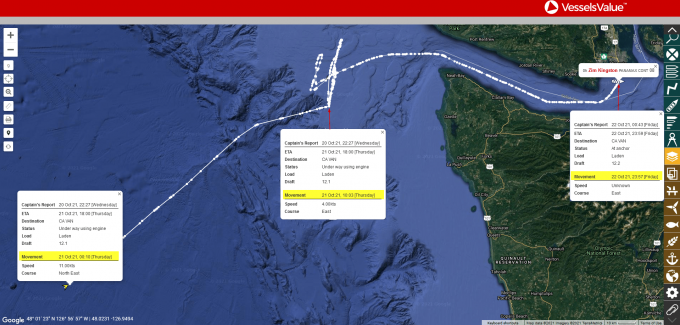Zim signs long-term charter deals for ten new 11,500 teu ships
Israeli container shipping line Zim has announced long-term charters for a series of ten new ...

Maritime experts in Vancouver have questioned the movement of the damaged Zim Kingston, prior to the vessel being hit by a storm, and why it had not entered the safety of sheltered waters.
This, it is claimed, may have prevented the stack collapse that precipitated the ...

Comment on this article